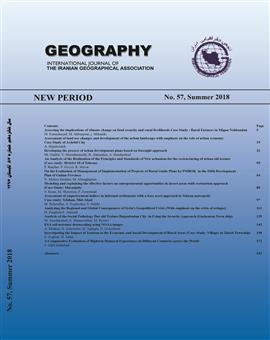"Assessment of empowerment indices in informal settlements with a base asset approach in Tehran metropolis - Case study: Isfahan, Mid-Abad"
Subject Areas :Mostafa Behzadfar 1 , 2 , Abdolhamid Noghrekar 3
1 - دانشگاه علم و صنعت ایران
2 -
3 - University of Science and Technology
Keywords: Informal settlement  , Empowerment  , Baseline Asset Approach  , Correlation satisfaction  , Neighborhood,
Abstract :
Today, the situation of urbanization and informal settlement in the world and its theories and experiences contain clear and useful points. While statistics indicate a growing urban population, especially in developing countries, poverty is seen as one of the most important aspects of population concentration in the cities of these countries. The main objective of the present study is to identify, in the first place, the indicators of empowerment of informal settlements with an emphasis on the concept of an asset-based approach as a new approach in contrast to the need-based approach and, secondly, to measure extractive indicators in order to understand the impact of each One of the satisfaction of inhabitants of these settlements is the living conditions and the role of each indicator in improving their living conditions. The study area of the study is the Interobhab district of Islamshahr, which in the year 1395 was about 24 thousand people. At the end of 2007 and beginning of 2008, about 45 thousand people lived in Mid Abad. The method used in the research is based on documentary, surveying and analytical combination. The results of the research indicate that the correlation in the residential building subsystem related to the capital capital index is higher than the rest, and then sub-index of monthly income The financial need index corresponds to the highest level of solidarity with the residents' satisfaction with informal settlements. After these two sub-indicators, we can say that the highest scores refer to sub-indicators of social capital index such as: accountability, trust, participation, institutional capacity.
